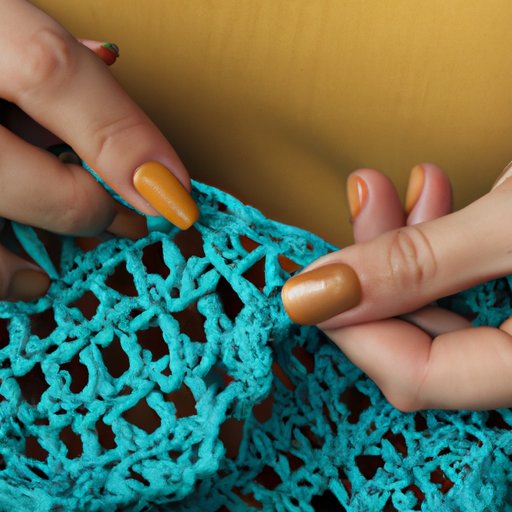
Introduction
If you’re new to crochet or just wanting to improve your skills, mastering the chain stitch is a great place to start. This stitch is the backbone of nearly every crochet project, so it’s essential to get it right. In this article, we’ll provide a step-by-step guide on how to chain stitch in crochet, discuss its various uses, and provide tips and tricks for working with this essential stitch.
What is the Chain Stitch in Crochet?
Crochet is a process of creating fabric by interlocking loops of yarn using a crochet hook. The chain stitch is the most basic of all crochet stitches and serves as the foundation for many other stitches.
The chain stitch is made up of a series of loops that look like knots. It’s a simple, versatile stitch that’s used for a variety of crochet projects, including blankets, scarves, and garments.
Step-by-Step Tutorial: How to Chain Stitch Crochet in Just 5 Minutes
To work a chain stitch, start by making a slipknot on your crochet hook. Then, yarn over and pull that yarn through the loop on your hook. Repeat this stitch to create a series of connected loops.
Here are the steps:
- Make a slipknot and place it on your hook.
- Yarn over (bring the yarn over the hook) from back to front.
- Pull the yarn through the loop on the hook. You’ve now made one chain stitch!
- Repeat steps 2 and 3 to make additional chain stitches.
- To finish, pull your final loop through the stitch.
Practice making chain stitches until you feel comfortable with the motion. Keep your tension consistent, and try counting your stitches to ensure they’re even.
Crochet Techniques 101: The Basics of Chain Stitching
Chain stitches serve a variety of purposes in crochet. They are used to create foundation chains, which serve as the first row or round of a project. They’re used to build subsequent rows and rounds, as well as to create decorative elements and edgings.
Proper tension is essential when working with the chain stitch. Too loose, and your fabric will be too floppy; too tight, and it’ll be difficult to work with. Practice maintaining a consistent tension, and make sure to count your stitches to ensure that your rows are even.
Unleash Your Creativity with Chain Stitch Crochet: A Comprehensive Guide
The chain stitch’s versatility means that it’s used in a wide range of crochet projects, from simple to complex. Beginners can try making scarves, dishcloths, and coasters, all of which require only chain stitches. As you gain confidence, you can move on to more advanced projects, such as garments or toys that incorporate various crochet techniques.
From Straight Lines to Complex Patterns: Building Your Skill Set with Chain Stitch Crochet
Chain stitches offer an excellent foundation for more complex crochet patterns. With practice, you can learn how to create textured stitches and use multiple colors to create intricate designs. Resources such as online tutorials, crochet groups, and books can help you develop your skills and learn more advanced techniques.
Troubleshooting Chain Stitch Crochet: Common Mistakes and How to Fix Them
Common mistakes beginners make when working with chain stitches include dropped loops, twisted chains, and uneven tension. It’s essential to learn how to spot these mistakes and how to fix them before they become a problem. Take the time to carefully examine your work and practice until you feel confident that your stitches are even and consistent.
The Joy of Chain Stitch Crochet: Combining Color and Texture to Create Stunning Projects
Adding different colors and textures of yarn can elevate even the simplest project to a work of art. Experiment with various yarns and color combinations to create unique projects and showcase your creativity.
Conclusion
The chain stitch is the foundation of nearly every crochet project, so it’s essential to master this stitch. With practice and patience, you can develop your skills and create beautiful crochet projects. We hope this article has provided you with the guidance and tips you need to get started with chain stitch crochet.
If you’re interested in learning more, consider taking a crochet class, joining a local crochet group, or exploring online resources.




